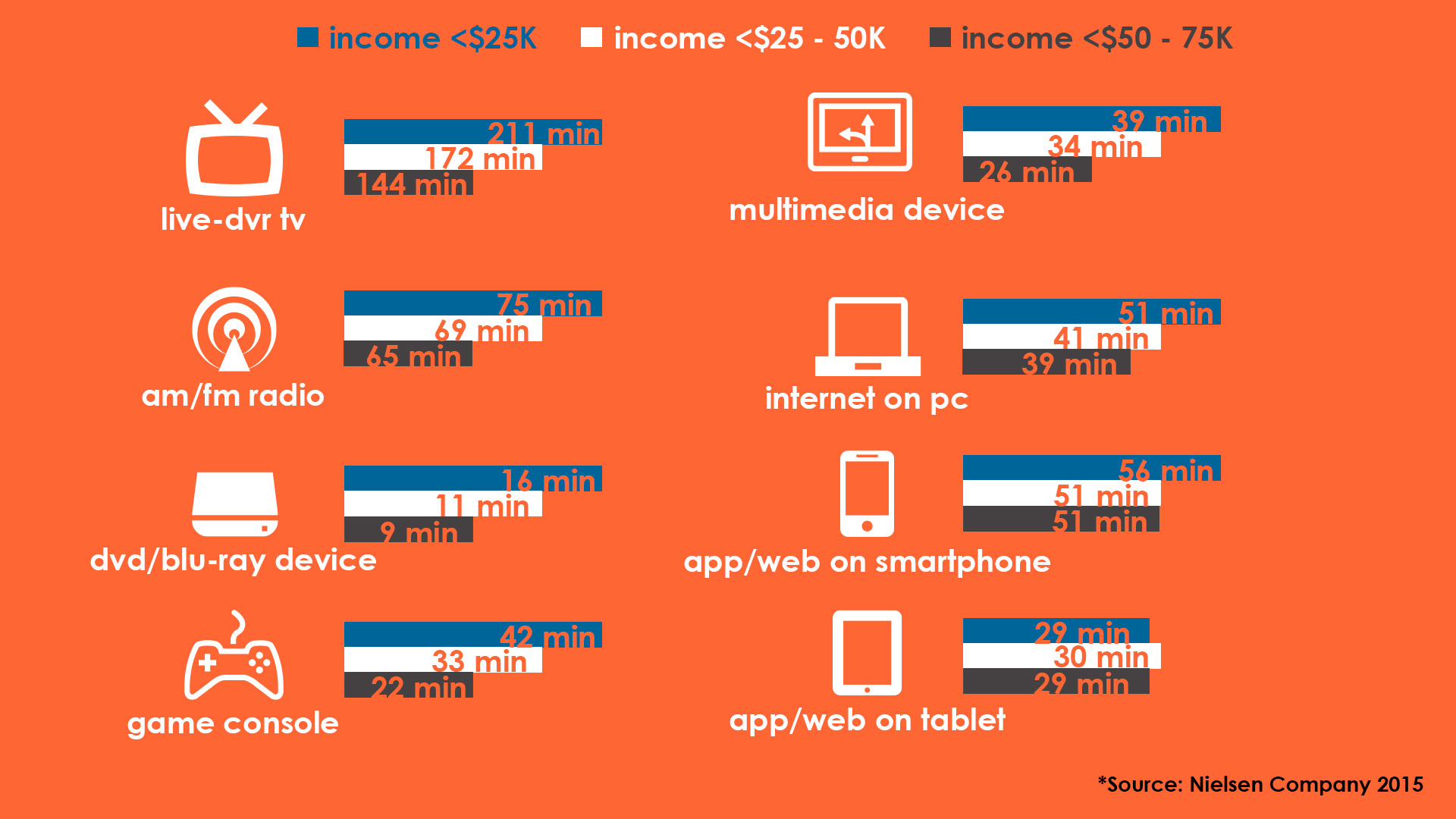Credit Union Advertising Strategy: From Broadcast to Digital
Tru Advertising not only creates amazing content, we also craft a solid credit union advertising strategy prior to starting any project. We oversee all media buying efforts to accommodate any budget. With viewership landscape evolving right before our eyes and media planning shifting towards digital video platforms, media buying through broadcast and online is key to a successful advertising strategy and influences brand impact. Media buying for both broadcast and digital placement not only extends brand awareness but also provides value as to who your customers are and their spending habits. It’s also beneficial to know who is watching what and the time frame they are tuning in. The most ideal credit union advertising strategy during this shift (if your budget allows) is to place a TV commercial during live television while also placing a digital video to the same audience serving as a retargeting measure. Digital advertising during summer months is very effective, especially since we’ve noticed July and August spike in credit union specific searches. It’s essential to include both traditional and online marketing into your credit union advertising strategy during the summer months generate brand awareness over any other season.
LIVE BROADCAST MEDIA BUYING
Over the last 10 years, the media market has undergone a drastic transformation which has positively affected sports on TV. There are channels among channels dedicated to sports content and a shocking amount of hours consumed. In 2015, there were more than 127,000 hours of sports programming available on broadcast and cable TV and more than 31 billion hours spent viewing sports, which is up 160% and 41%, respectively, from 2005.
This is just one example showing how live broadcast media buying has changed throughout the years. You may be wondering about all those other fancy ways of catching your TV time like DVR or On Demand channels but we’re talking strictly live television and broadcasts. The most cost effective broadcast media planning strategy we’ve found to be effective is buying TV spots during live broadcasts, either local news or primetime. Brilliant marketing results in brilliant exposure, and an advertisement that goes unseen is an investment given zero room for a return. That’s why it’s essential to know who is watching as well as when they are watching. For instance, live television continues to be quite the event in summer months which would be a great time to place a commercial. Late Spring is when regular series tend to go on hiatus and variety shows/contests pick go into full effect with including:
Live Results Shows
Most viewers are invested and dedicated fans don’t get #spoileralerts via social media, they want to experience the expense themselves! This is the year for adding live television to your media planning strategy!
Race To The White House
Viewers have so much to tune into with the U.S Presidential debates hot on the campaign trail. Moving into the election season, live TV remains American’s first choice when it comes to must-see events, such as political debates and political news coverage.
Live Sporting Events
ONLINE PLACEMENT
Research continues to prove that digital video is an increasingly important opportunity in the marketing world, reaching a growing audience and reiterating a brand’s message initially missed via broadcast TV. Google has validated YouTube’s growing process as a digital video platform that can provide tremendous incremental reach. YouTube also led all digital video platforms in December 2014 reaching more 18 to 34 and 18 to 49-year-olds than all TV network digital video properties (full episode players) combined and consistently reaching more 18 to 49-year-olds than any other premium digital video platform.
The digital consumption of consumers continues to grow. Understanding the current shift as to why people are viewing the same content on TV as they are online is important. Although, the main difference with online content, you’re reaching them at a time that is most convenient to them.
WHY AUDIENCES GRAVITATE TOWARDS ONLINE
Less Expensive
Fewer Commercials
Binge Watching
Prefer To Watch On Own Schedule
It's More Convenient
Knowing the line-up for broadcast television benefits the other side, the online audiences. Every credit union advertising strategy needs to include an online presence. Placing a video online aiming to target the same audience as broadcasts allows customers to act on familiarity. Nationally, viewers are consuming the same amount of media, however, they are watching more in less amounts of time or visa versa thanks to online platforms. While these new technologies are becoming an ever more important part of the overall media pie, live TV remains the primary medium to consume video, making it necessary to take advantage and get your message out there.
SCHOOLS OUT FOR THE SUMMER
During the summer months radio is also a valuable option, essentially placing the spot less reaching more people, considering road trips, BBQ’s and pool parties. Radio advertising tends to be over saturated, therefore more in demand, and a bit over priced at this time. We’ve found social media ads tend to hold longer retention rates and are shared more during summer months versus non-summer months. Rightfully so, being the average temperature in the Phoenix area averages 106º.
Advertisers sometimes assume families are hitting the road for the summer. It’s a great assumption considering children are out of school, however this is also a time known for sky rocketing gas prices and room rates. Understanding family incomes and media consumption by device helps allocate your media buying budget.
DOES YOUR CREDIT UNION ADVERTISING STRATEGY INCLUDE CROSS-DEVICE MARKETING?

Lower-income households use the most media across traditional and emerging platforms. The media behavior of low-income adults may be concentrated in fewer devices, resulting in more minutes of usage for the devices they own, while high-income adults distribute their time among more devices. This information is helpful when allotting budgets for your credit union advertising strategy.
Having a true perspective of who your customers are and how they are consuming their media will maximize your media buying budget. The proportion of usage going to each media platform is partly explained by the ownership of new devices and services, and partly by the ways adults with different incomes use these devices and services. Not surprisingly, higher-income households own more different kinds of media devices and subscribe to more services. This is particularly evident with newer devices and services such as smart TVs, multimedia devices, tablets and SVOD.
A great example of broadcast and online advertising working together is when we placed a TV commercial during America’s most watched night in television, The Super Bowl. We then immediately followed up with a video online advertising commercial targeting “American Football Fans”. Therefore, when football fans turned to the internet for micro-moments and snack-sized clips (highlights), our YouTube placed preroll resurfaced as a retargeting measure!
